Sebastian J. Denzler
Guiding Visual Attention in Deep Convolutional Neural Networks Based on Human Eye Movements
Jun 21, 2022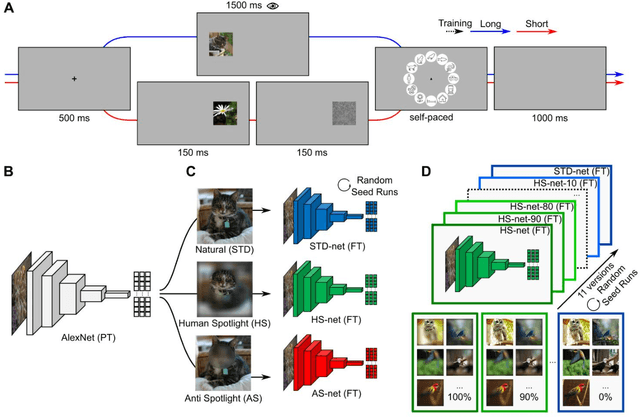
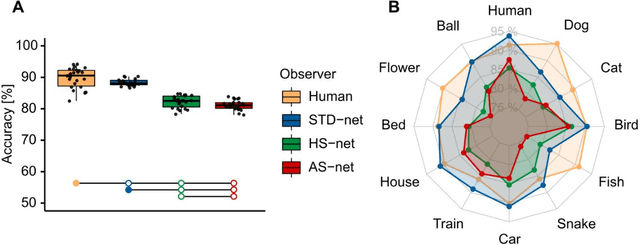
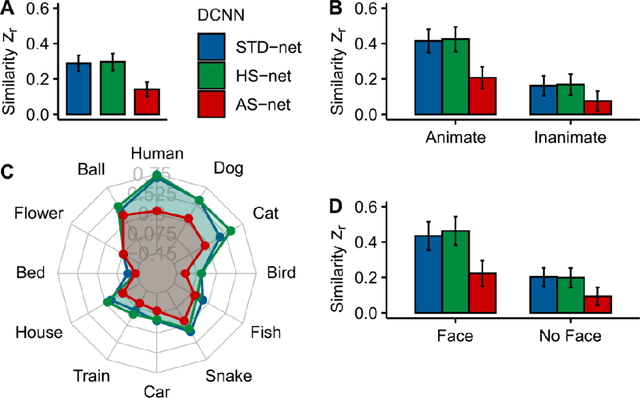
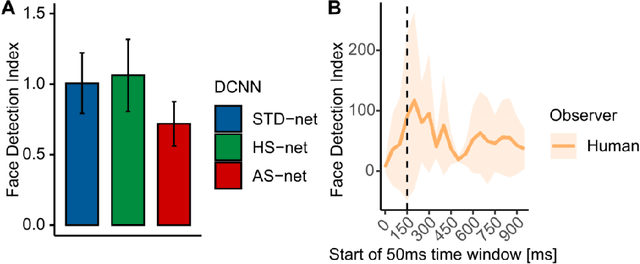
Abstract:Deep Convolutional Neural Networks (DCNNs) were originally inspired by principles of biological vision, have evolved into best current computational models of object recognition, and consequently indicate strong architectural and functional parallelism with the ventral visual pathway throughout comparisons with neuroimaging and neural time series data. As recent advances in deep learning seem to decrease this similarity, computational neuroscience is challenged to reverse-engineer the biological plausibility to obtain useful models. While previous studies have shown that biologically inspired architectures are able to amplify the human-likeness of the models, in this study, we investigate a purely data-driven approach. We use human eye tracking data to directly modify training examples and thereby guide the models' visual attention during object recognition in natural images either towards or away from the focus of human fixations. We compare and validate different manipulation types (i.e., standard, human-like, and non-human-like attention) through GradCAM saliency maps against human participant eye tracking data. Our results demonstrate that the proposed guided focus manipulation works as intended in the negative direction and non-human-like models focus on significantly dissimilar image parts compared to humans. The observed effects were highly category-specific, enhanced by animacy and face presence, developed only after feedforward processing was completed, and indicated a strong influence on face detection. With this approach, however, no significantly increased human-likeness was found. Possible applications of overt visual attention in DCNNs and further implications for theories of face detection are discussed.
Comparing object recognition in humans and deep convolutional neural networks -- An eye tracking study
Jul 30, 2021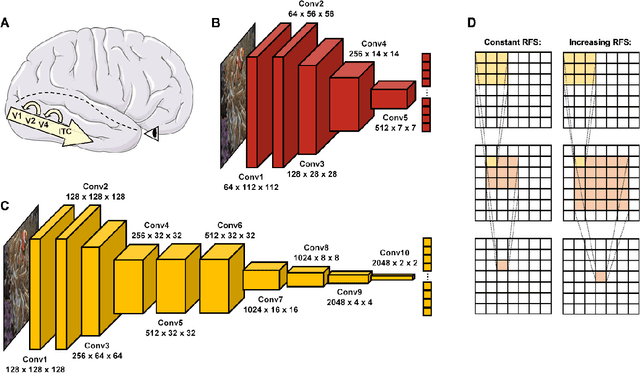

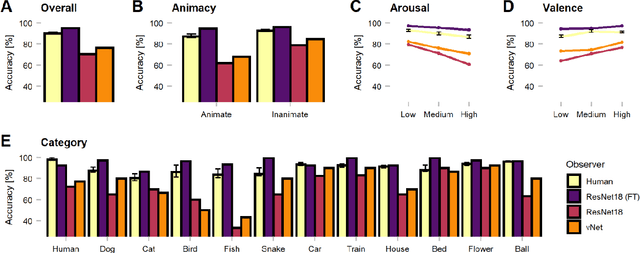
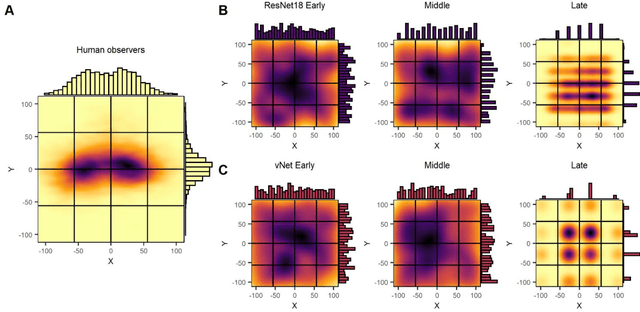
Abstract:Deep convolutional neural networks (DCNNs) and the ventral visual pathway share vast architectural and functional similarities in visual challenges such as object recognition. Recent insights have demonstrated that both hierarchical cascades can be compared in terms of both exerted behavior and underlying activation. However, these approaches ignore key differences in spatial priorities of information processing. In this proof-of-concept study, we demonstrate a comparison of human observers (N = 45) and three feedforward DCNNs through eye tracking and saliency maps. The results reveal fundamentally different resolutions in both visualization methods that need to be considered for an insightful comparison. Moreover, we provide evidence that a DCNN with biologically plausible receptive field sizes called vNet reveals higher agreement with human viewing behavior as contrasted with a standard ResNet architecture. We find that image-specific factors such as category, animacy, arousal, and valence have a direct link to the agreement of spatial object recognition priorities in humans and DCNNs, while other measures such as difficulty and general image properties do not. With this approach, we try to open up new perspectives at the intersection of biological and computer vision research.
 Add to Chrome
Add to Chrome Add to Firefox
Add to Firefox Add to Edge
Add to Edge